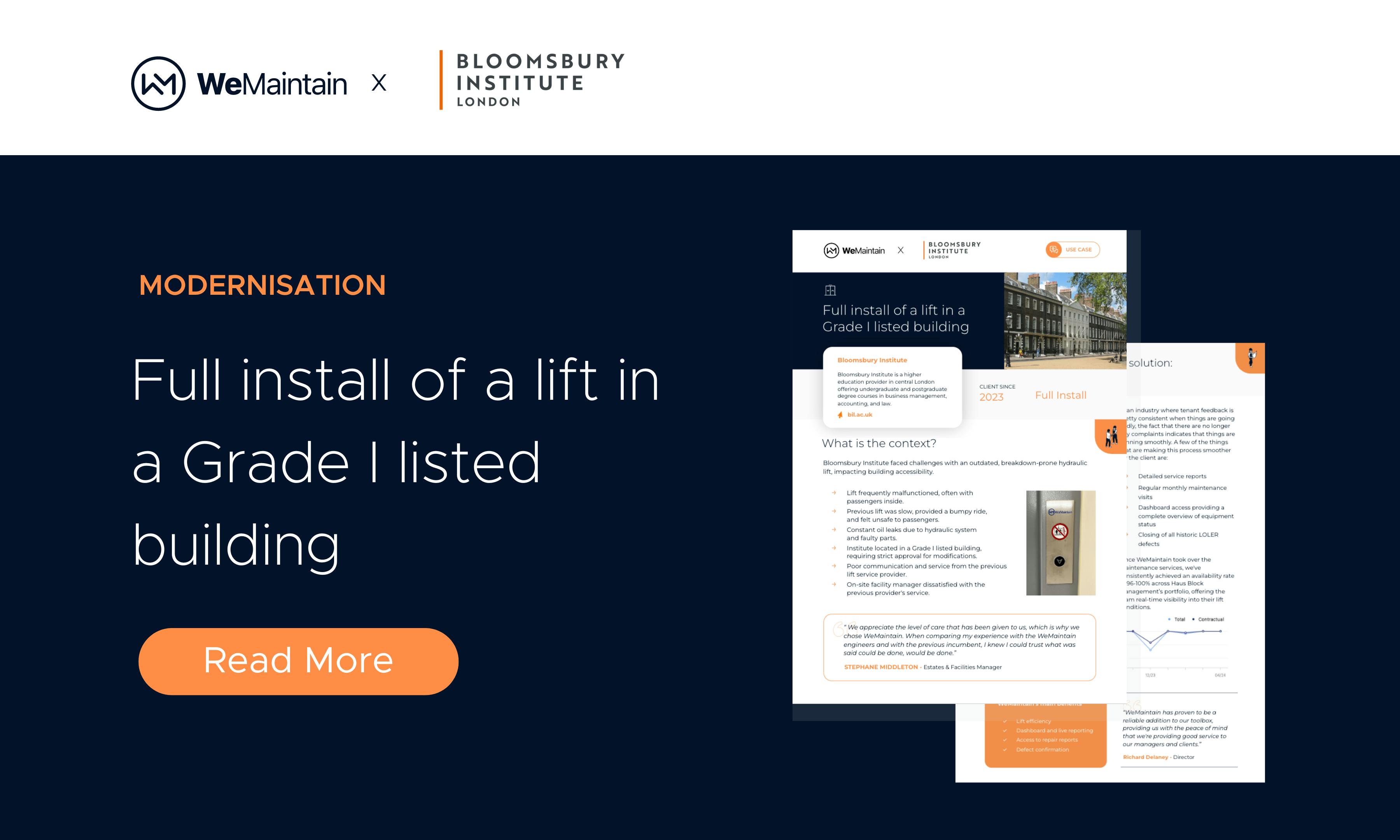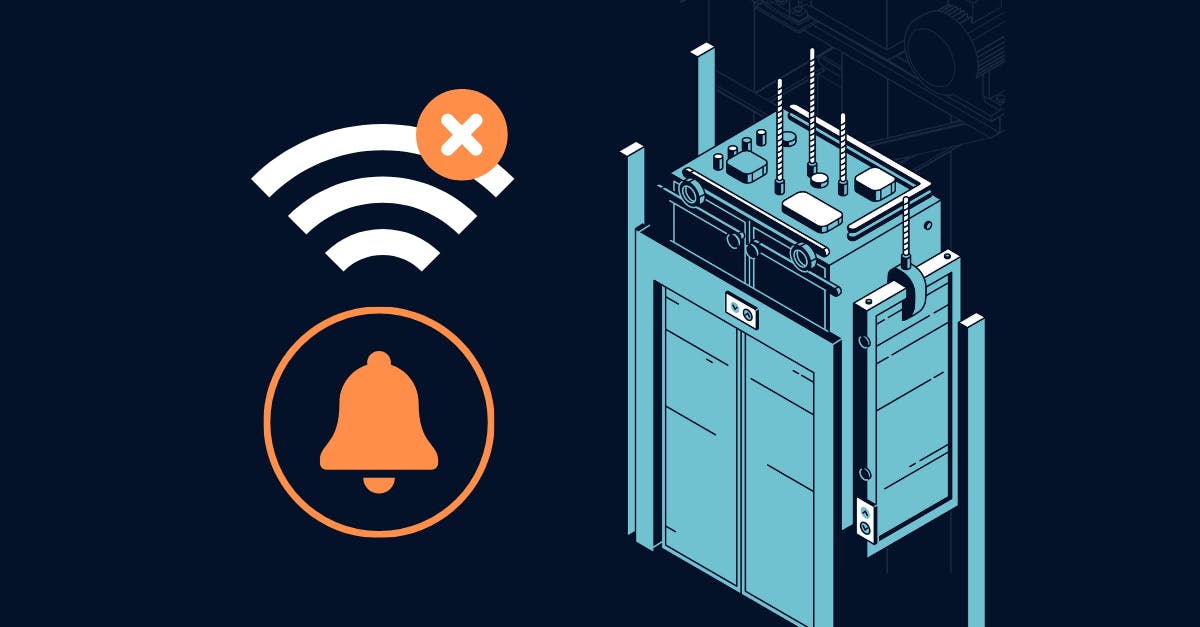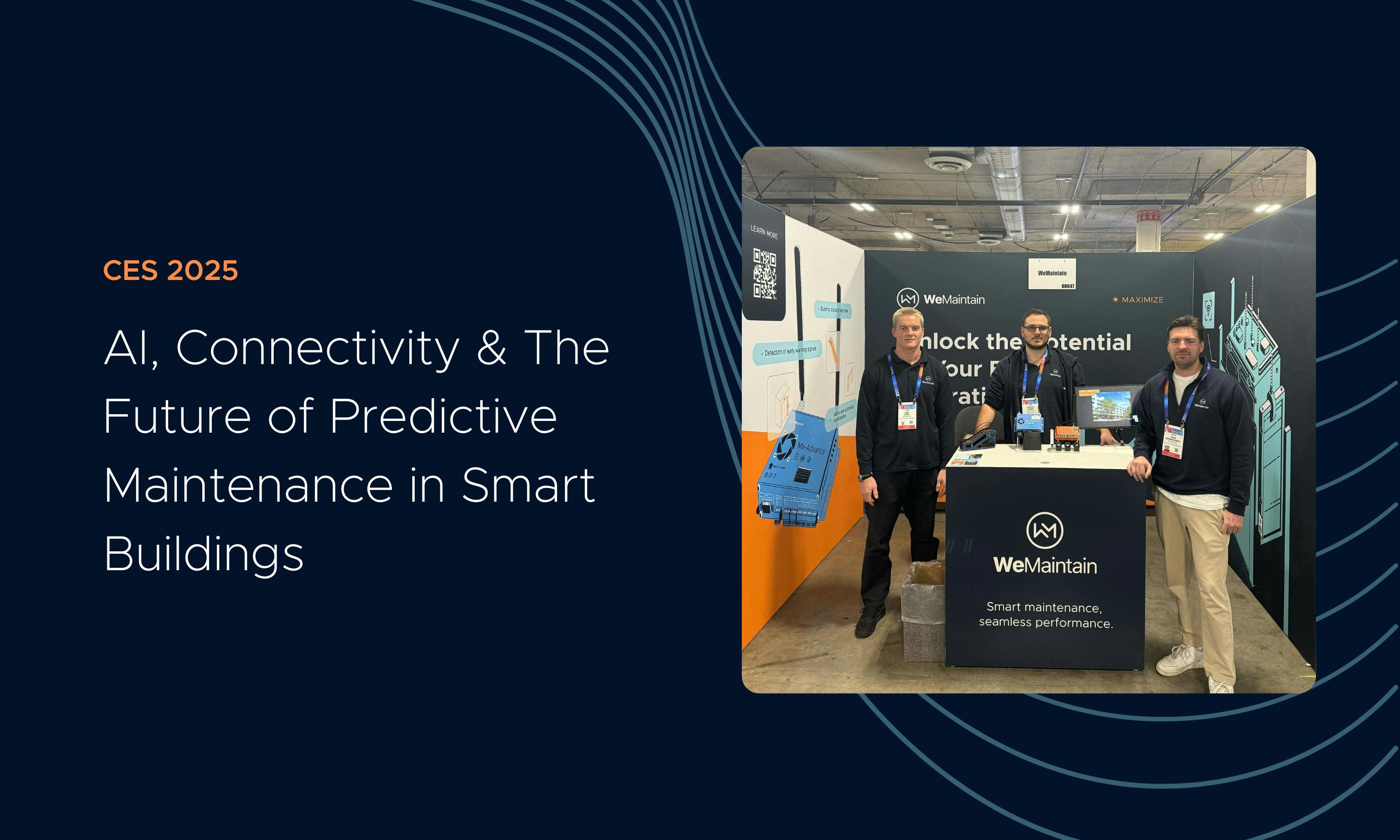
Inside WeMaintain: Product Edition
At WeMaintain, we don’t just do maintenance — we build technology that redefines it. Our DNA is that of a tech company operating in the built environment, not the other way around. Everything we develop is rooted in one belief: the people on the ground — field engineers, facility teams, ops — deserve better tools, clearer insights, and greater autonomy. By empowering them, we bridge the gap between traditional maintenance and smart infrastructure. Our platform combines IoT, AI, and human expertise to set a new benchmark for performance, customer experience, and sustainable growth. This Product Edition is our opportunity to share how we build, what we've built, and where we’re headed. It’s a reflection of our vision, our roadmap, and our ambition to lead the building maintenance transformation. Where It Began The story of WeMaintain started with a simple observation: for too long, building owners, managers, and field engineers have been limited to minimum standards and outdated processes. Convinced that a more human and efficient model was possible, the co-founders developed WeMaintain to redefine industry standards. We are transforming maintenance by combining IoT, real-time data, and a digital platform to deliver smarter, more sustainable operations. Our approach empowers field engineers and drives cost savings, performance, and long-term asset sustainability. Our Tech Stack At WeMaintain, our mission is clear: “To enhance the built environment with a human-led approach, powered by innovative technology, ensuring seamless operations and exceptional experiences.” WeMaintain’s product is built around two complementary suites: Maintain and Maximize. With our people, on and off the field, being our greatest asset. Maintain Suite Maintenance is still mostly reactive, straining technical teams with limited tools. We believe in empowering our field engineers with the tools, autonomy, and recognition they deserve. Our goal being to combine their experience and expertise to deliver higher-quality maintenance, greater efficiency, and better outcomes on the field. A human-led approach is at the heart of how we build at WeMaintain. ⇒ Smarter maintenance with tech-empowered engineers using our in-house app (Engineer App) ⇒ Real-time insights and system integration for seamless operations ⇒ Full visibility and control of your equipment via the Client App ⇒ Integrated supply chain ensures fast, seamless repairs and fixes Maximize Suite To address industry-wide challenges, Maximize takes a holistic approach to performance — from rapid issue response to long-term optimisation and measurable impact. ⇒ Real-time alerts detect breakdowns as they occur — on average, three hours earlier than traditional methods. ⇒ Maximize offers real-time insights that drive smarter, more efficient operations. ⇒ Move from one-size-fits-all to needs-based maintenance plans with insights tailored to actual equipment usage. ⇒Beyond improving availability, we help extend asset lifespan and boost energy efficiency for long-term performance gains. Our data-driven approach translates into clear actions and measurable ROI. Our Product Principles Our approach to product development is shaped by a set of core principles. These guide how we build, prioritise, and evolve our technology. What We’ve Built: A Retrospective Let’s take a look at what the past 6 months have been like. During this period, our focus has been on strengthening the foundations of our two suites: Maintain, our service-side platform, and Maximize, our IoT-driven insights platform. Maintain: Smarter Tools for Service Excellence We’ve made several enhancements to help engineers and operations teams work more efficiently: ⇒ The new dashboard , along with all the existing features, now provides engineers with a real-time, all-in-one view of their global portfolio ⇒ Engineers can now manage repairs, order parts, and access a global catalogue—all in one app for faster, more consistent service. These updates support our goal of providing engineers with better tools, while offering clients increased transparency and control. Our internal product suite is built for the engineers, with the engineers. All features go through a rigorous beta-testing process allowing for refinement and seamless adoption. Maximize: A Dedicated Platform for Performance Insights Maximize takes a 360° approach to react to problems, optimise for the long run, and assess performance. One of the most significant milestones this year has been the launch of the new Maximize platform. Currently going through rigorous testing and only open to limited customers at the moment. The platform was designed to offer a clear, centralised view of how their buildings are performing. It brings together data and insights to help users make decisions faster and act before issues can escalate. For those deploying Maximize, the platform shows: ⇒ Lift Downtime Alerts – Instant updates when a lift is out of service or back online. ⇒ Improved Downtime Details – A single page with all critical info in one place. ⇒ Escalator Downtime Detection – Now includes downtime detection. What We Learned Along the Way The refinement of Maximize was shaped through close collaboration with our clients and our product team. Every feature was refined by real feedback, tested with early adopters, and improved through ongoing dialogue. “Maximize isn’t just a product—it’s an ecosystem. From IoT sensors to our SaaS platform, we’re solving real-world challenges like uptime and sustainability. Partners like Groupe ADP push us to go further, and our engineers keep us focused on what truly matters.Co-building with those on the ground makes all the difference.” — Georgia, Product Manager A great example of this is our work with Groupe ADP, whose feedback has been instrumental in refining the Maximize experience. 📹 Watch Groupe ADP’s experience with Maximize. Looking Ahead: What’s in the Pipeline for the Next 6 Months Over the next six months, we’re focused on building with intent, deepening our existing products while we continue our steady growth. Maintain: Knowledge, Speed, and Autonomy Through a combination of in-app training, technical documentation, and a more standardised experience, we aim to support engineers in every situation — from routine maintenance to complex breakdowns. Key developments include: ⇒ Ai Based training and knowledge platform: A training and knowledge platform, designed to help engineers deepen their technical understanding in real time ⇒ Improved access to manuals and diagnostics: Making brand-specific documentation easily available within the app to speed up fault detection ⇒ Brand-agnostic capabilities: Supporting our engineers with tools that work across all equipment types and manufacturers These updates help move closer to true brand independence, while reinforcing our human-led model with smart, field-ready tools. Maximize, expanding to escalators Alongside the continued refinement of our core features, we’re now extending Maximize’s capabilities to escalators — a significant leap forward in our mission to offer complete asset visibility. In most of the market today, escalator IoT solutions are limited to simple fault alerts or energy tracking. Maximize goes far beyond this by bringing together real-time field data, contextual insights, and performance metrics in a single, actionable platform. What makes our approach different: ⇒ Multi-dimensional performance tracking: Beyond energy use, we measure availability, usage patterns ⇒ Insights connected to action: Maximize doesn’t just identify potential problems — it helps teams understand what to do next ⇒ One platform, all assets: Clients managing both lifts and escalators now benefit from unified data, reporting, and decision tools Maximize for Escalators is not a new module, but rather it’s a step toward a more complete understanding of how buildings move and perform. Our unique strength lies in bridging the gap between operations and data, giving clients and field teams the tools they need to make faster, smarter decisions. Keeping up with the Industry: Picking the right predictive maintenance provider Predictive maintenance is one of the biggest trends shaping the future of building operations. Everyone in the industry is talking about it, and many are attempting to build solutions around it. But not all approaches are equal. Most players, particularly OEMs, are taking a controller-based approach, integrating intelligence into their own equipment systems but this comes with critical limitations: ⇒ Vendor lock-in: These systems only work with the proprietary equipment, making them harder to adapt across diverse portfolios. ⇒ Security vulnerabilities: Controller-based systems can be remotely accessed and potentially open to external interference if not managed carefully. ⇒ Invasive deployment: These solutions typically require invasive installation leading to lengthy rollouts. At WeMaintain, we’ve taken a fundamentally different path. Our non-invasive, brand-agnostic approach utilising IoT sensors gives us, and our clients, key advantages: ⇒ More nimble and scalable: Our sensors work across brands and asset types, making rollout faster and less disruptive. ⇒ Increased accuracy: By capturing real-time field data from multiple touchpoints, we generate deeper insights on equipment condition and usage. ⇒ More secure by design: Our sensors aren’t exposed to the same remote access risks as controller-tied systems, making the data environment easier to protect and maintain. ⇒ Truly independent: We don’t rely on manufacturer-specific data to generate insights. This means more transparency and better benchmarking. We believe this is the right foundation for predictive maintenance at scale — one that’s reliable, secure, and built for the real operational complexity of buildings today. Final Thoughts That wraps up our first Product Update. As the market continues to evolve, it's clear that predictive maintenance will play a defining role in shaping smarter, safer, and more efficient buildings. But to truly deliver on its promise, the underlying technology must be adaptable, secure, and rooted in real operational needs — not manufacturer limitations. At WeMaintain, we’re proud to offer a solution that meets the moment and looks ahead. Stay tuned for more updates as we continue to build the future of building maintenance — one alert at a time.
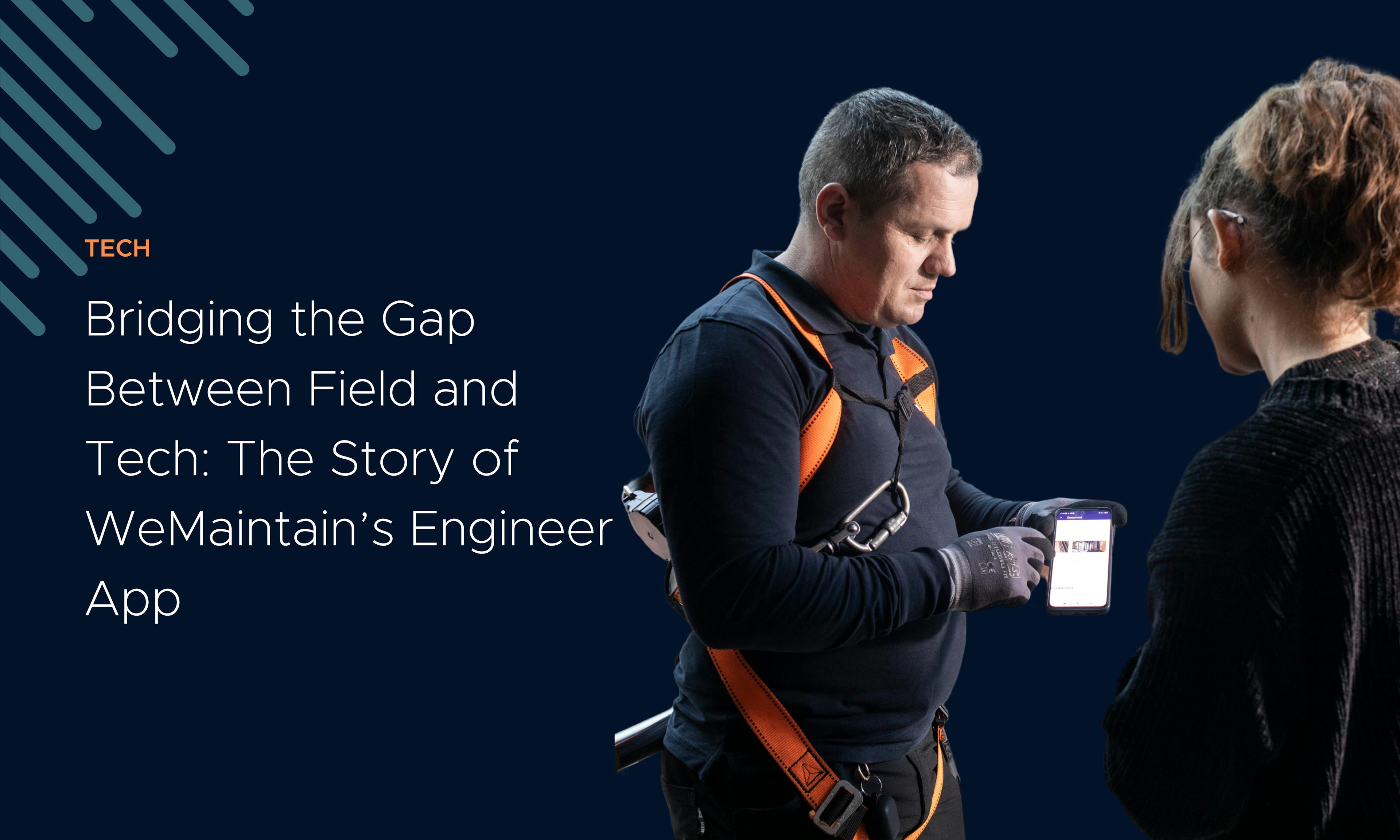
Bridging the Gap Between Field and Tech: The Story of WeMaintain’s Engineer App
At WeMaintain, we believe that technology should serve the people who use it. That’s why we built our in-house Engineer App, a digital tool designed for our engineers, with our engineers. Managing buildings and their equipment is no easy task, and outdated processes can lead to frustrating delays. That’s why we built an app to improve engineers’ workflow. The app ensures engineers can track the units they manage, request parts instantly on-site, and access the full history of a building’s maintenance—all in one place. While on site, engineers record details of their visit, noting what was checked or fixed. This creates an automatic report for the client. With real-time data, streamlined workflows, and reduced downtime, our app helps engineers work smarter. By combining our experts in tech with our experts in the field, here’s how we’re making a difference. Built to Empower Engineers on the Ground A Tool Developed for Engineers, By Engineers At WeMaintain, our product team works directly with engineers to develop an app that supports their daily tasks. From ideation to beta testing, engineers are at the heart of the process, shaping a tool that makes their work more efficient. Listening to Feedback & Beta-Testing: Co-Building in Action Building a tool that works seamlessly in the field requires constant communication. Whether through Slack discussions, office conversations, or brainstorming sessions, we stay connected with our engineers to address their challenges and refine the app based on their insights. Our teams conduct on-site shadowing of the engineers to better understand how to improve their experience with the app. Every new feature undergoes a rigorous beta-testing phase. A dedicated group of engineers tests new functionalities, providing hands-on feedback to fine-tune usability and ensure the app enhances their workflows. For example, through our latest beta test, we introduced the dashboard feature, giving engineers an instant overview of their activity and managed units the moment they open the app. One of our beta testers, Caine Smith, an engineer in London, shared his experience: "I’ve really enjoyed being a beta tester, as it has allowed me to help the team developing the WeMaintain app make improvements. The features we are testing will enhance training across the company while also providing greater insight into our daily tasks within the app itself. The development team has actively sought feedback on improvements, which truly sets WeMaintain apart from anywhere else.” How does the app empower the engineers? Say goodbye to paperwork and slow communication. Our internal engineering tool provides: ✅ On-site visit logging – Auto-generates a client worksheet. ✅ Unit tracking – Monitor all managed units in real time. ✅ Instant maintenance history – Quick access to past repairs. ✅ On-site parts requests – Reduce wait times for replacements. ✅ Seamless collaboration – Connect operational teams, engineers, and clients. By consolidating all essential information into one user-friendly interface, we give engineers everything they need to fix issues faster and reduce building downtime. Streamlining Workflows for Maximum Efficiency A New Dashboard: Addressing Key Challenges One of the most common challenges engineers faced was a lack of visibility over their portfolios. They struggled with: No clear overview of their managed units Difficulty accessing colleagues’ portfolios Limited visibility on past and ongoing maintenance deadlines Miscommunication between engineers, ops managers, and clients, leading to delays These issues slowed down recovery times for shutdown units and created unnecessary inefficiencies. To tackle this, our teams got to work—and the solution was the all-new engineer dashboard. A Smarter Overview, Faster Decisions The new dashboard , along with all the existing features, now provides engineers with a real-time, all-in-one view of their global portfolio, including: Live status of all units: showing which are operational and which need attention to improve recovery times for shutdown units. Identification of units with insurance defects: requiring action to reduce reliance on ops managers by having all the information they need at a glance Visibility on interventions: what’s been done (and by whom) and what is scheduled or late to better meet maintenance deadlines. Enhance communication between engineers, ops managers, and clients By continuously listening to engineers’ feedback, we’ve built a powerful, user-friendly tool that streamlines workflows and improves efficiency. Lewis Wormleighton, an engineer in London who participated in the beta-testing process, shared his thoughts on the Engineer App: "The app makes everything much clearer. It highlights shutdown jobs that might have been missed if attended by the night or weekend team, a really useful feature. It also clearly displays remaining services, helping me stay on top of my tasks more efficiently." At WeMaintain, we believe the best technology is built with its users in mind—that’s why we’re always evolving, testing, and improving. Beta testing isn’t just about troubleshooting; it’s a collaborative process that strengthens our product through real-world insights and continuous innovation. Looking Ahead: The Future of Our Engineer App Technology never stands still, and neither do we. Our product-engineering team continues to work closely with our beta testers to ensure the app meets the evolving needs of our engineers. We’re committed to making building maintenance as seamless and efficient as possible. Because when engineers have the right tools, they can deliver the best service—and that’s what WeMaintain is all about. 🔗 Stay Connected Want to learn more about how WeMaintain is transforming building maintenance? Or do you want to join as an engineer? Check out our career opportunities! Stay tuned for more updates as we continue to innovate, improve, and empower engineers with the tools they need.
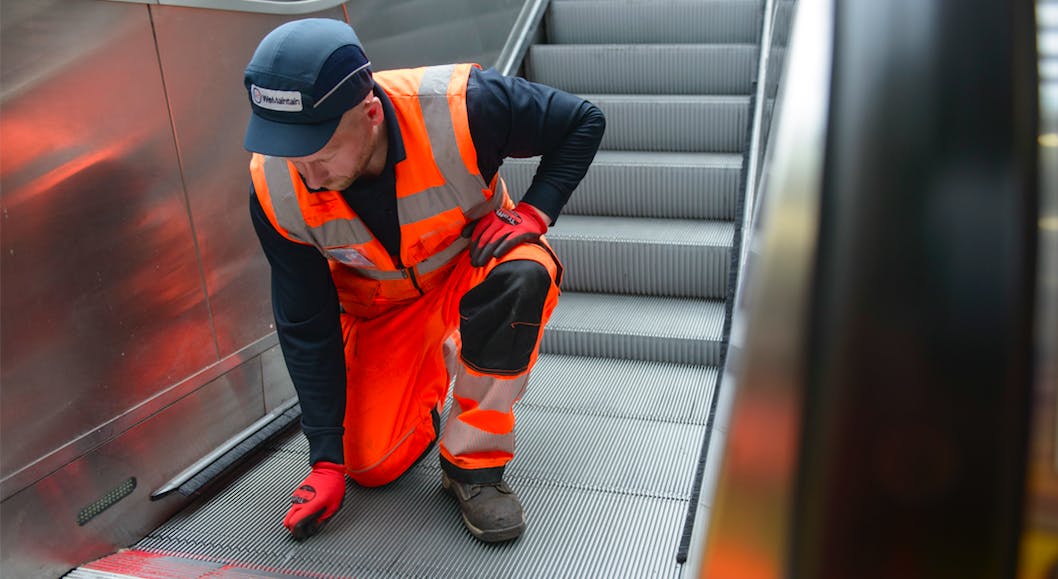
How WeMaintain's IoT is integrated into escalators
Did you know WeMaintain's IoT sensors can be installed on escalators? As it's 'Elevator and Escalator Safety Awareness Week', our Head of Data and R&D, Olivier Gabriel, thought this would be the perfect time to mention the key benefits surrounding the safety of WeMaintain's IoT and its application on escalators. At WeMaintain, on elevators we use our in-house IoT model. For escalators, we use a slightly modified version of this device. By installing this device onto an escalator, we are able to gather a range of data on the unit and give customers a new level of visibility on their assets. The IoT isn't only limited to monitoring analytics to improve maintenance and asset availability, but also monitors key escalator components that can impact passenger safety. Our escalator IoT monitors: Handrail speed live Live fault mode activation Once this data is collected, it is stored in WeMaintain's secure cloud, a separate platform to the main database ensuring high levels of security for our customers data. The benefits By gathering data on an escalator, it also opens doors to new information for customers to use. Real-time monitoring and reporting to our client systems and platforms means the ability to highlight performance issues with major components before failure, with the addition of a faster call response time for your dedicated engineer. This in turn reduces overall downtime of an escalator. One of the significant causes of passenger accidents on escalators is due to deviations in the handrail speed. WeMaintain’s IoT can capture the live speed of each handrail and report the data to your engineer who can act accordingly. Collecting this type and amount of data gives greater visibility to customers to inform decisions regarding CAPEX and modernisations. The data also gives the customers the power to reduce costs and improve on maintenance regimes. Get in touch If WeMaintain can help you operate your escalators more safely using IoT and technology, click here!
Filter by theme:
All
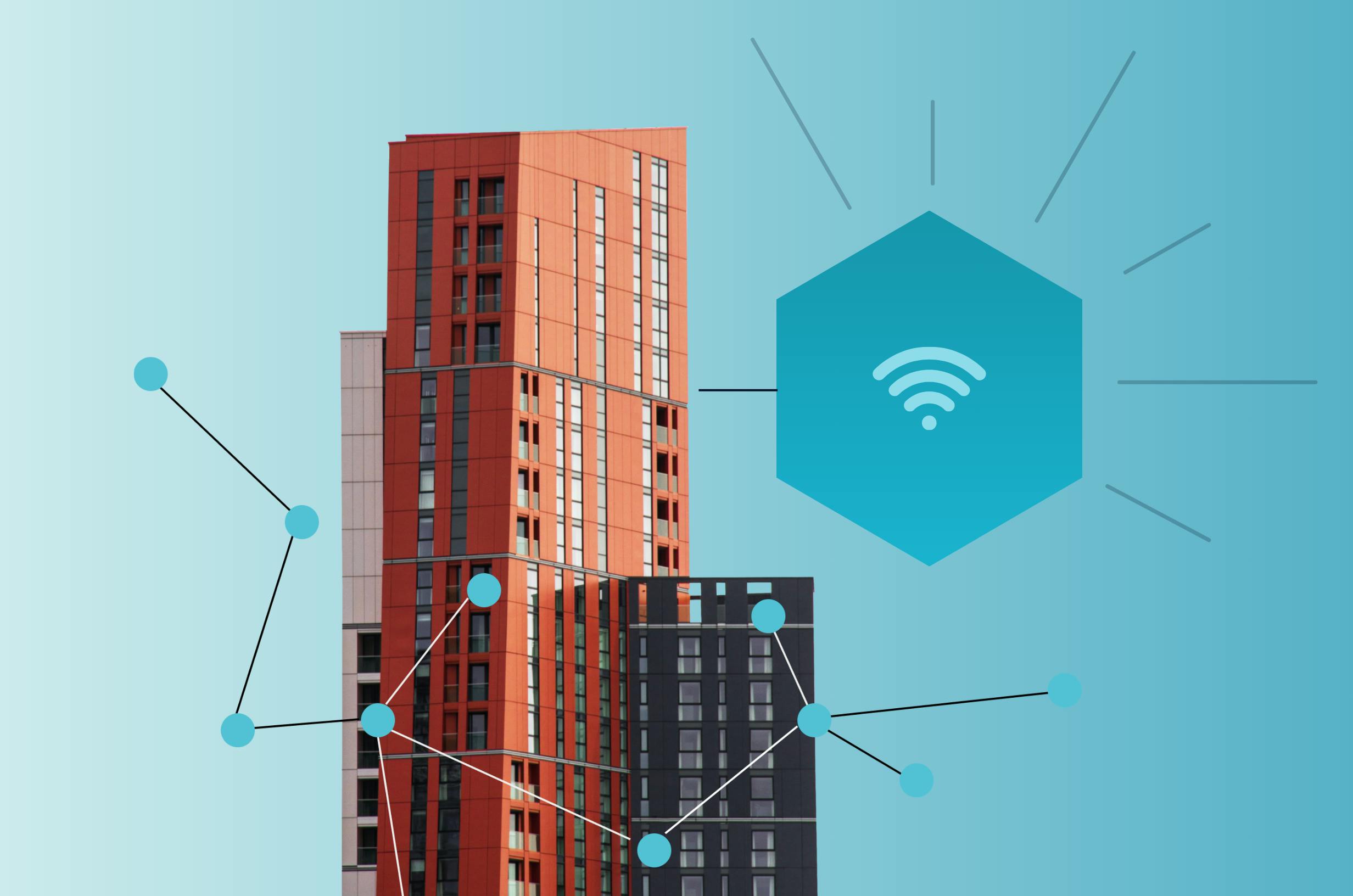
Maximize Guide
The “Maximize Guide” outlines WeMaintain’s IoT-based solutions for optimizing building operations, offering predictive maintenance, real-time alerts, and energy-saving strategies for equipment like lifts and escalators. It showcases how machine learning and data insights enhance reliability, reduce downtime, and improve efficiency.

